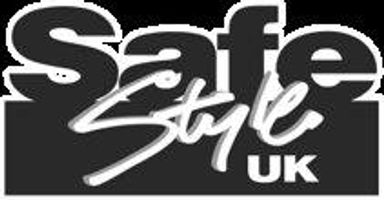Title Page
-
-
Audit Titl
General Area Hazard Assessment
-
(1) Has a regular internal safety Audit been scheduled for this department or department area? (Daily/Weekly/Quarterly/Yearly)
-
(2) Has this Department/Area's log of Injuries/Illnesses/Near Misses been used to identify potential hazards to workers?
-
(3) Has employee input been used to identify zones where 'close calls' occur?
-
(4) Is PPE the being used adequate for the job/s being performed?
-
(5) Are special precautions taken to maintain exit routes during construction and repairs?
Personal Protective Equipment
-
(6) Is PPE functional and in good repair?
-
(7) Is PPE in close proximity to where it's needed?
Physical Plant
-
(8) Are exits marked and in close proximity to operations?
-
(9) Is each work area adequately ventilated?
-
(10) Are workers situated such that they avoid injury, relative to machinery and process.
-
(11) Is exhaust from forklifts or other gas or diesel powered equipment controlled?
-
(12) Is the area adequately lighted?
-
(13) Is the floor free from slip and trip hazards?
-
(14) Is the area free from live elecrtrical hazards?
Moving Parts
-
(15) Are processes and machinery in the area free from motion hazards?
-
(16) Are workers protected/prevented from injury by reaching over machines with moving parts?
-
(17) Are safeguards in place that will keep workers from reaching into a machine parts?
-
(18) Are workers prevented from getting caught in or between machine parts?
-
(19) Is equipment free of rolling or pinching objects which could crush workers toes?
-
(20) Are lockout procedures used during maintenance and cleaning procedures?
-
(21) Are workers prevented from wearing clothing or jewelry that could get caught in a machine?
-
(22) Is all machinery and equipment kept clean and well maintained?
Temperature, Dusts, and Light/Radiation
-
(23) Are workers protected from high temperatures that could cause burn, eye injury, or ignition of PPE?
-
(24) Are workers protected from sources of excessive cold?
-
(25) Are workers protected from harmful dusts?
-
(26) Are dusts and chemicals kept from being dispersed into the air?
-
(27) Are workers protected from light/radiation hazards such as welding, cutting, brazing, furnaces, high intensity light?
Chemicals
-
(28) Are steps taken to adequately protect workers from chemical exposure hazards?
-
(29) Are workers aware of content in chemical piping systems nearby?
-
(30) Are operating procedures readily available to employees who work with chemical processes?
-
(31) Is there a list of hazardous substances used in this facility?
-
(32) Are SDS's readily available for each hazardous substance used?
-
(33) Are all containers properly labeled?
-
(34) Is hazardous waste stored, if so, are all hazardous waste requirements complied with?
Impact Hazards
-
(35) Are workers from objects which could fall or drop?
-
(36) Are suspended loads such as compressed springs/hydraulics/jacks controlled to prevent hazards?
-
(37) Are workers protected from sharp objects which might pierce/cut their feet and hands?
-
(38) Are workers protected from fixed objects which may cause harm such as sharp machine edges?
-
(39) Do workers have adequate fall protection?
Hearing Conservation
-
(40) Are noise levels moderate enough to allow effective worker communication?
-
(41) Have areas where noise levels are too high for effective verbal communication been identified and posted?
-
(42) Is hearing PPE available to every employee working near noise levels that exceed 85 dBA?
-
(43) Are engineering controls being used to reduce excessive noise levels? Where engineering controls are not feasible, are workers being rotated to minimize exposure to noise?
Ergonomics
-
(44) Is the worker aligned to the machine in a way that avoids dangerous or off balance positions?
-
(45) Are worker movements analyzed so that potential injuries from repetitive motion are avoided?
-
(46) Does the workspace allow for a full range of work movements?
-
(47) Is mechanical aid/equipment provided where feisable?
-
(48) Are work stations designed to minimize twisting/bending at waist, reaching above shoulder, static muscle loading, bending/twisting of wrist, and elevation of elbows?
-
(49) Are armrests, footrests, and floor mats provided where needed?











